Professional Motorsports Can Still Learn from Ken Block
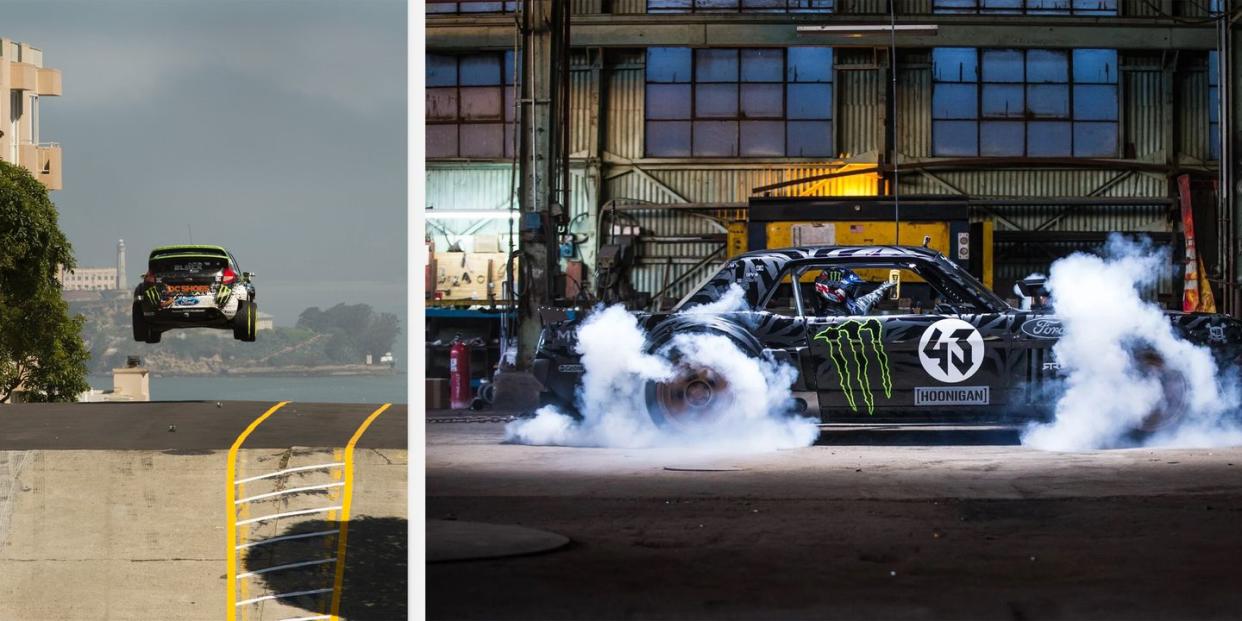
The only time I ever had a one-on-one moment with Ken Block was at some sticky-floored nightclub in Las Vegas during SEMA in 2013. We were assembled there, along with a number of athletes across other sports, as guests of GoPro, our sponsor at the time. As a 25-year-old kid managed by the same action-sports arm of the Wasserman Media Group that was founded around Ken, Travis Pastrana, Ryan Sheckler, and other enormously prominent athletes, and at the beginning of a career in IndyCar with its own high-profile moments (remember the 2011 Indy 500?), I had not yet shed myself of the ego that comes attached to those things.
Ken had recently been on record saying something about how he wasn’t interested in pavement racing, which, of course, we pavement racers took with a dash of offense. What is he trying to say? Gymkhana 5 had been released the year before, accumulating millions of views, prompting Ken to take fire from “real racecar drivers” right and left and innumerable folks from traditional racing who couldn’t fathom the attention he was getting for doing something that had no apparent reason to exist. Was it even motorsport? That wasn’t at all what I thought, but in the moment that we happened to cross paths and he willingly engaged in a chat, it was of course the simple, silly, and wholly unimportant question of why he wasn’t into traditional racing that popped in my mind, as Mr. Real Racecar Driver Guy.
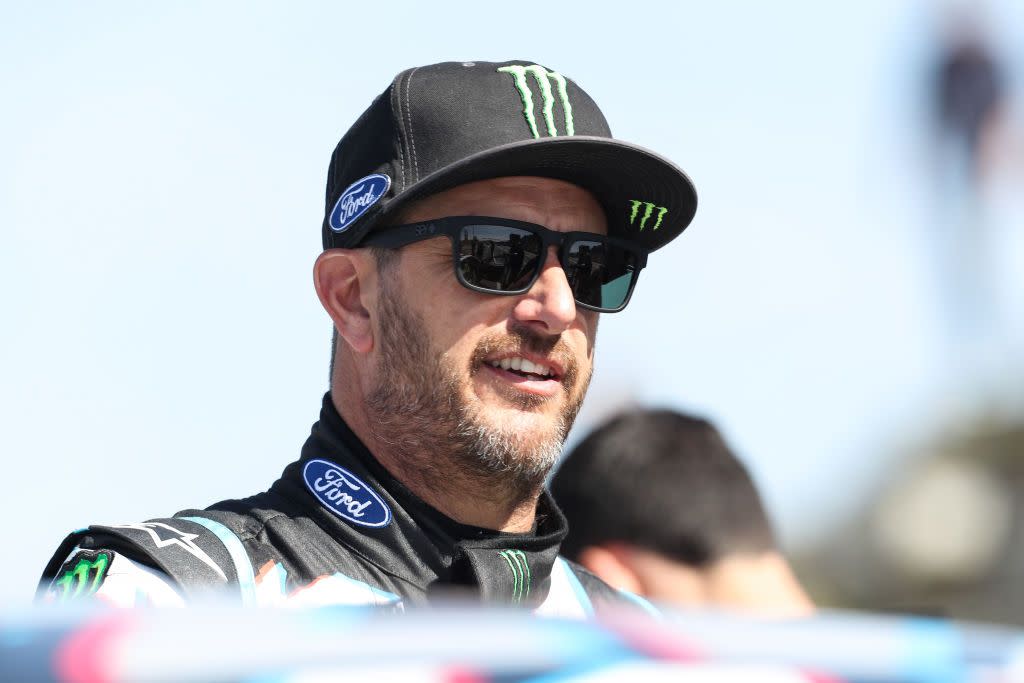
He answered with some degree of detail. It wasn’t because he didn’t appreciate the skill of the drivers, or he necessarily didn’t see the overall appeal, it wasn’t expressive enough, and fundamentally wasn’t for him. If I had the ability in that moment to remove myself from the chest-out I’m-an-IndyCar-driver-and-you-should-give-a-shit-about-that headspace, I likely would have taken in what Ken was saying and said, “You know what? I actually agree.” Coming up on a decade later my Instagram feed is full of trophy trucks, rally cars, and other things that go faster the more steering lock you’re willing to put in and are unquestionably on the absolute limit of control. I bought a subscription to Midjourney just to see if I could envision for myself what a modern 1,400hp IndyCar with big meats and no wings could look like. As far as I’m concerned that’s what it ought to be and every day that goes by without it is a day running meaninglessly into the next.
Instead, I–still playing the role of Mr. Real Racecar Driver Guy–fired off all kinds of arguments for why Block should reconsider his point of view. He acknowledged but not much more. Shortly thereafter we went our separate ways, me thinking he was some version of being close-minded (really?), and him certainly thinking he needed another drink.
What I really wish I had said, with the benefit of a decade’s-worth of humility, is simply, “Gymkhana changed my life.”
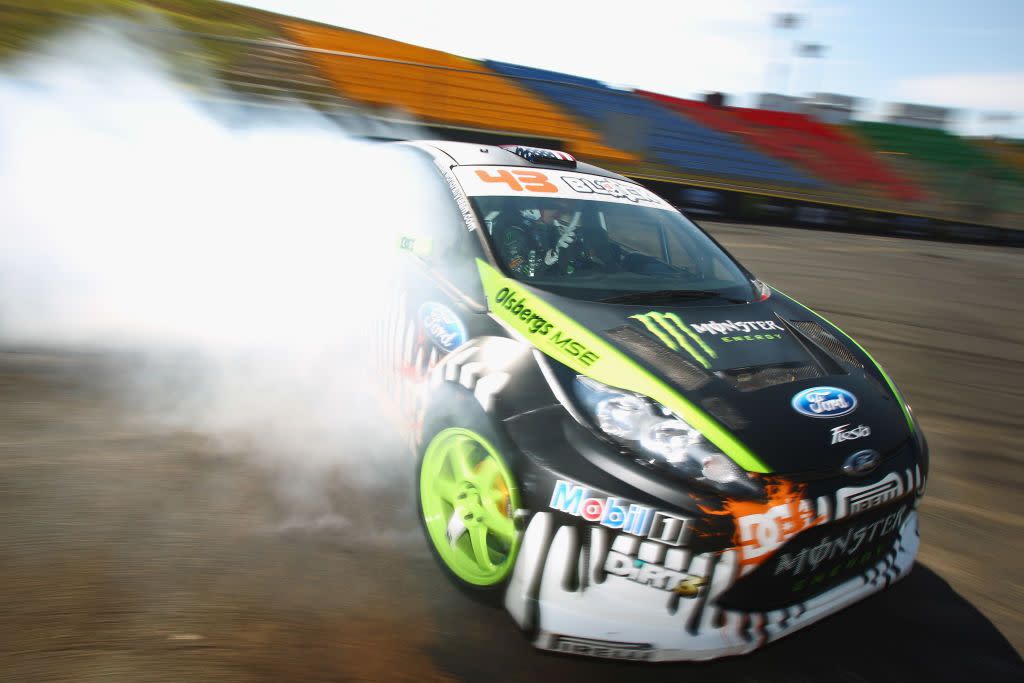
Gymkhana is the Schrödinger’s Cat of modern motorsport. It’s expressive of motorsport’s greatest attributes while simultaneously not being motorsport as we know it. It’s evocative like a Senna qualifying lap but playful like a Jackass stunt. It is, at the same time, a guy having fun and a guy skillfully starting a new religion. How can these things go together in the same instance? Maybe only Ken really knew, but the fact remains that the passion for driving, creativity, and desire to do something fresh and different that resulted in Gymkhana did create an instantaneous quantum leap in how we would look ahead.
I became a professional racing driver precisely when the homogenization and de-escalation of speed in motorsport hit its peak. Spec cars galore, performance dutifully contained, mechanisms to combat the growing unknown of where technology was headed. What are we supposed to do now that a car can be built under nearly any global formula that might be faster than a human could be trusted to drive it? I reckon we haven’t found or implemented a good answer yet, as evidenced by the irrefutably incremental and uninspired formulas across motorsport for the last decade. I’m grateful to have been able to–and still do–make a living as a professional driver during this time. But let me also be loud and clear: this is not what I thought it was going to be growing up. It makes you think too hard about why we’re all doing it, which is not how motorsport is supposed to work.
Motorsport’s reason for being doesn’t come into question when it’s right. When it’s truly remarkable, people watch, and it hums along like a well-oiled machine. It really is that simple. At its best motorsport is subliminally entrancing. It can be from the sound, from the motion and behavior of the car, or from a deep insight into the human spirit present behind the wheel. If it strikes a combination of these factors it sucks you in and absolves you of any thought behind the “why” of it all. The human experience you have while witnessing or participating in it comes from neural connections so deeply rooted that it justifies itself in a continuous loop without any extra thought.
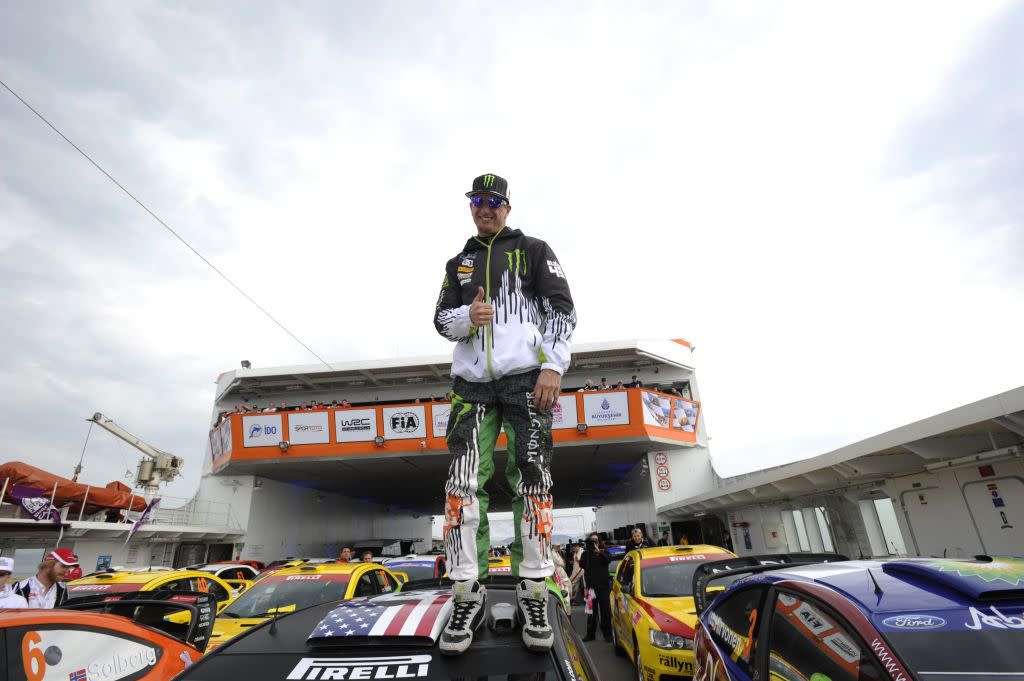
And, so, while motorsport became ever-more focused on getting as many cars to finish as closely together as possible while allowing the excessiveness and the exceptionalism of its competitors to be masked, space opened for something new. While we were sitting in our pews wishing for some re-tooled artifact from the past to bring us back to the good old days, it was not a return to big power, low downforce machines in some orthodox way, but the newly ordained High Priest of Hooning that came bursting through the front door.
The gospel of Gymkhana was simple. If you’re having fun doing it, they’re having fun watching it. If it’s unquestionably evident that you’re doing something with a degree of skill, precision, commitment, and bravado that few others possess or choose to showcase, those attributes will be respected and admired. And perhaps most notably, the traditional confines of motorsport are not required to do awesome motorsport things. We don’t need a primetime TV window every other weekend to have enormous viewership. We don’t need 30 cars running laps for three hours to attract attention. By removing all the structure and constraints, you can design and build the most radical racing driver’s cars of this era. As long as you’re doing it for your own right reasons (the simpler, the better), and that it is truly remarkable, the greater “why” is entirely inconsequential.
Ken helped millions of existing fans and motorsport newcomers scratch an itch many didn’t even know they had, just by doing what he wanted. He fearlessly leaned into his own deepest desires, because sometimes you gotta do what the chemicals in your brain tell you. Ken, and Gymkhana, evolved as much or more than any motorsport has since 2008, always showing up with something new fueled by an ever-more-difficult-to-satiate hunger to reach each new level of his and his Hoonigan crew’s own expressive and creative bar. Each machine was somehow more radical or innovative than the last, wildly contrasting environments, a constantly ground-breaking process of collecting and producing photo, video, and sound.. the things all motorsport should strive for through a time when arguably none could. They didn’t get it 100 percent right every time. Some of the experiments failed and flopped along the way. But the results over time are the epitome of what great motorsport stands for.
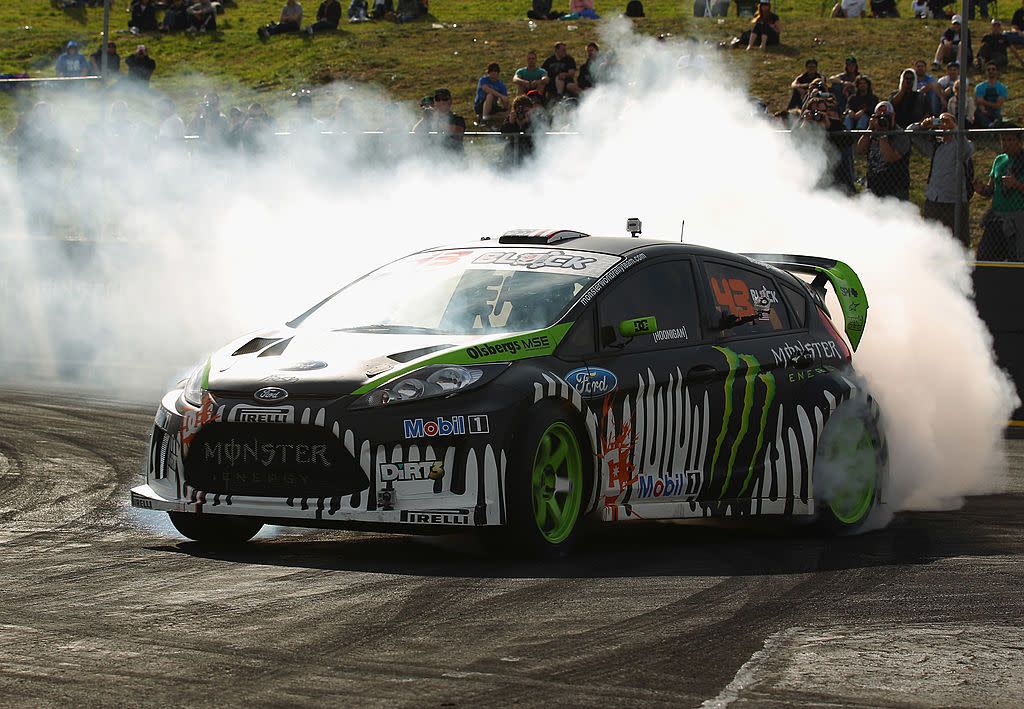
For a young IndyCar driver who, before ever driving an Indy car had spent days at a time drifting Seventies flat-bottomed F1 cars down Sears Point’s Carousel laying a fat black stripe out to the exit curb in the top of 4th on open test days, Gymkhana took the taboo out of saying, “Hey, so why can’t what we’re doing feel as awesome as that?” In an environment where there’s an unspoken expectation to tow the line for the good of the sport, Gymkhana was a vindication that anyone wanting more, anyone feeling like the ceiling for how incredible the experience of being a part of motorsport is must certainly be higher, was not going insane. If you could watch Gymkhana 5 in the streets of San Francisco, see the tens of millions of views pile up, the “youth demographic” going apeshit, and not recognize that something worth paying attention to was happening here, you did not get it. Gymkhana pulled back the curtain on traditional motorsport and showed that whatever its excuses were for being watered-down or unadventurous, they were, most certainly, just that.
Gymkhana really did change my life. It exposed these primal and essential parts of motorsport that I knew existed but were whispers of the past by the time I actually got to the promised land. Yes, Ken packaged them a very different way, but nonetheless, there they were in all their glory. It broke the model we all follow with rules and constraints for every last nut and bolt, while still being funded by good old-fashioned sponsorship and advertising. As I sit here now I can’t help but continue to be emboldened in saying there’s SO MUCH MORE we could be doing to make our sport great. And I’d submit a deep dive into what made Gymkhana the phenomenon it still is would be a good place to start.
Being really amped is not a part of my typical demeanor. The bar for me to get excited about things is really high, it’s how I’ve always been. It’s something that’s probably kept me from chasing more rides, doing driver coaching, and hanging out at the track when I don’t absolutely need to be there over the years–decisions that have not always been the right ones. But when I look at what the future could potentially hold for our sport, I’m as amped as could possibly be, thanks, in part, to Ken. It’s the thing that I wake up in the morning thinking about. The chaos of automotive tech, media rights, and fundamentally how we engage in the human experience together today doesn’t have to be scary; it can allow us to be fearless about taking chances and trying new things as long as we really understand the basics of what makes our sport great in the first place.
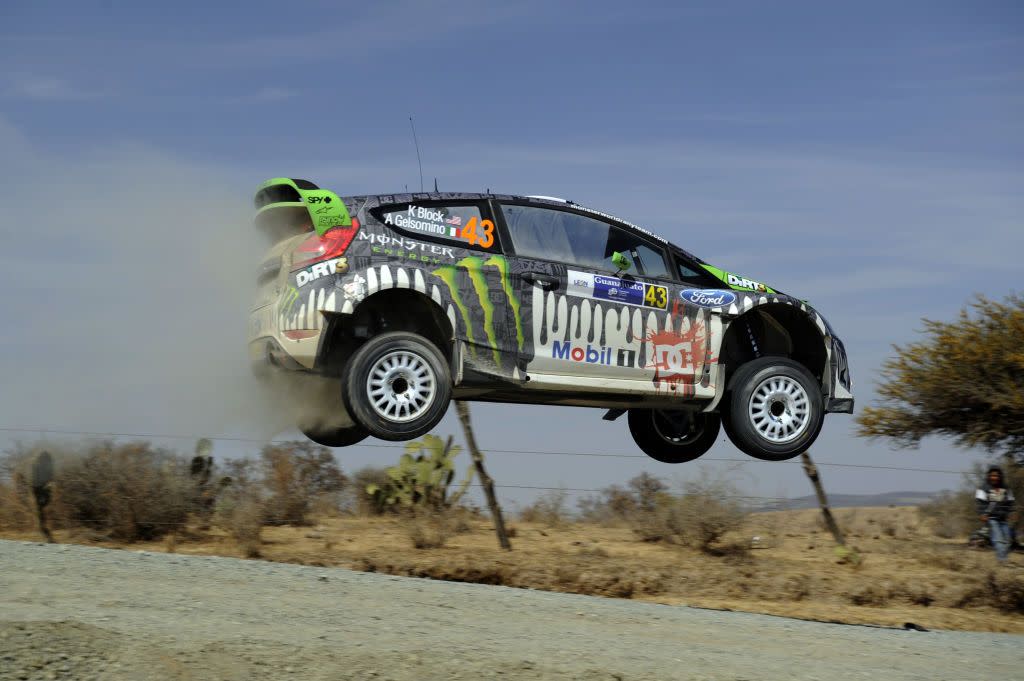
I recently turned 35, which gives me a twinge of urgency about these things; surely a byproduct of being in a profession where you start early and go as fast as you can as soon as you can because you can only do it for so long. But if I take a breath, I truly believe there’s always time for incredible things to come to life. And for anyone feeling that same twinge of urgency in their own way, I’d like to remind you that Ken Block was 40 when he decided to fuck around and find out what filming a practice session of Gymkhana would look like. Given what he was still doing in his 50’s, it just didn’t matter. Ken was unafraid to be himself, let his passions drive him, do his thing his way, and let that be whatever it was going to be every single day. I can’t think of a better way to live a life.
You Might Also Like
